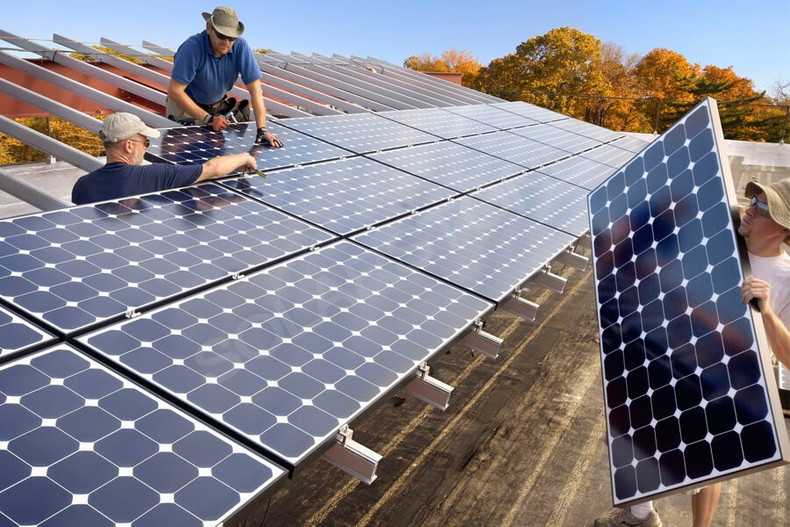Solar energy has come a long way since its inception, with solar module efficiency playing a crucial role in its widespread adoption. This blog post will explore the journey of solar module efficiency, from its humble beginnings to the cutting-edge technologies of today, with a focus on the Indian solar market.
The Early Days of Solar Technology
The photovoltaic effect, which forms the basis of solar energy conversion, was first discovered by French physicist Alexandre-Edmond Becquerel in 1839. However, it wasn't until the 1950s that the first practical solar cells were developed at Bell Labs in the United States. These early cells had an efficiency of just 6%, meaning they could convert only 6% of the sunlight they received into electricity.
The 1970s and 1980s: Slow but Steady Progress
During this period, research efforts focused on improving the efficiency and reducing the cost of solar cells. By the late 1980s, silicon-based solar cells had reached efficiencies of around 20% in laboratory settings. However, commercially available modules typically had efficiencies between 6-15%.
The 1990s and 2000s: Rapid Advancements
The turn of the millennium saw significant advancements in solar technology. Multi-junction cells, which use multiple layers of different materials to capture a broader spectrum of light, achieved efficiencies over 30% in laboratory settings. Meanwhile, commercial silicon-based modules reached efficiencies of 15-20%.
India's Solar Journey
India's solar story began in earnest with the launch of the Jawaharlal Nehru National Solar Mission in 2010. This ambitious program aimed to deploy 20 GW of grid-connected solar power by 2022, a target that was later revised to 100 GW. As of 2024, India has made remarkable progress, with over 70 GW of installed solar capacity.
Current State of Solar Module Efficiency
Today, the most efficient commercially available silicon-based solar modules have efficiencies around 22-23%. However, laboratory cells have achieved efficiencies over 26% for single-junction silicon cells. Multi-junction cells used in concentrated photovoltaic systems have reached efficiencies over 47% in laboratory settings.
Cutting-Edge Technologies Shaping the Future
1. Perovskite Solar Cells: These offer the potential for high efficiency at low cost. In 2024, perovskite-silicon tandem cells have achieved efficiencies over 30% in laboratory settings.
2. Bifacial Solar Modules: These modules can capture sunlight from both sides, increasing energy yield by up to 30% compared to traditional modules.
3. Half-Cut Cell Technology: By cutting solar cells in half, this technology reduces resistive losses and improves module efficiency.
4. PERC (Passivated Emitter and Rear Cell) Technology: This advanced cell architecture improves light capture and electron recombination, boosting efficiency.
5. Heterojunction Technology (HJT): Combining crystalline silicon with amorphous silicon layers, HJT cells offer high efficiency and better performance in high-temperature conditions.
India's solar market has been quick to adopt these new technologies. Many Indian manufacturers, including Waaree Energies, have invested in advanced production lines to produce high-efficiency modules. The Indian government's emphasis on domestic manufacturing through initiatives like the Production Linked Incentive (PLI) scheme has further accelerated the adoption of cutting-edge technologies.
Challenges and Opportunities
While solar module efficiency continues to improve, challenges remain. These include:
1. Cost: High-efficiency modules often come at a premium price.
2. Scalability: Some advanced technologies are still difficult to scale up for mass production.
3. Durability: Newer technologies must prove their long-term reliability under real-world conditions.
However, these challenges also present opportunities for innovation and growth in the Indian solar industry. With its strong emphasis on renewable energy and the goal of achieving 500 GW of non-fossil fuel capacity by 2030, India is well-positioned to be at the forefront of solar technology adoption and innovation.
Solar Integration and the Future of Energy in India
As solar module efficiency continues to improve, the integration of solar technology with other emerging technologies is opening up new possibilities for India's energy future. One of the most promising areas is the combination of solar power with energy storage solutions. Advanced battery technologies, including improved lithium-ion batteries and emerging alternatives like solid-state batteries, are making it increasingly feasible to store solar energy for use during non-sunlight hours or periods of peak demand.
As these technologies converge, they are reshaping India's energy landscape, paving the way for a more sustainable, efficient, and resilient power system. The continued advancement in solar module efficiency will remain a key driver in this transformation, making solar energy an increasingly attractive and viable option for India's diverse energy needs.
Conclusion
The evolution of solar module efficiency has been remarkable, from the 6% efficient cells of the 1950s to today's high-performance modules exceeding 23% efficiency. As research continues and new technologies emerge, we can expect further improvements in efficiency, durability, and cost-effectiveness of solar modules.
For those interested in harnessing the power of the latest solar technologies, Waaree offers a comprehensive range of high-efficiency solar products. Visit shop.waaree.com, the official e-commerce platform of Waaree, to explore our cutting-edge solar modules, inverters, and complete solar solutions. Whether you're looking to power your home, business, or contribute to India's renewable energy goals, Waaree provides state-of-the-art solar products backed by years of expertise and innovation in the Indian solar industry. Experience the future of solar energy with Waaree – your trusted partner in the solar revolution.



